I have no mouth, and I must scream
I am a great soft jelly thing. Smoothly rounded, with no mouth, with pulsing white holes filled by fog where my eyes used to be. Rubbery appendages that were once my arms; bulks rounding down into legless humps of soft slippery matter. I leave a moist trail when I move. Blotches of diseased, evil gray come and go on my surface, as though light is being beamed from within.
[...]
I have no mouth. And I must scream.
"I Have No Mouth, and I Must Scream" is the name of a short story written by Harlan Ellison in 1966, the same Harlan Ellison who wrote Star Trek's "City on the Edge of Forever" among others. It is also the name of a computer game touching on the same subject as the book, in which Ellison himself participated as a designer. I bet you've heard of him before. Well, I've been completely oblivious until recently, despite the fact that I'm quite a Star Trek guy and a science fiction fan in general.
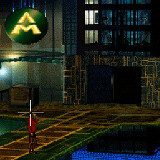 The game was launched about thirty years after the story, which, I argue, doesn't make the book look more outdated nor the game less interesting. Similarly to Gabriel Knight, I had heard of IHNMAIMS a while ago but never got around to playing it until it became available on more modern distribution channels1. This also made me interested in Ellison's original work, which I read and enjoyed and which has now led me to write this piece.
The game was launched about thirty years after the story, which, I argue, doesn't make the book look more outdated nor the game less interesting. Similarly to Gabriel Knight, I had heard of IHNMAIMS a while ago but never got around to playing it until it became available on more modern distribution channels1. This also made me interested in Ellison's original work, which I read and enjoyed and which has now led me to write this piece.
"I Have No Mouth, and I Must Scream" introduces a universe which can be described in one plain word: brutal. Not unlike other settings of the last half of the 20th century, it involves such things as "supercomputers": Asimov did it, Adams did it; heck, Clarke created a similar supercomputer one year later. Only few writers placed their fictional computers in settings such desolate as the one devised by Ellison.
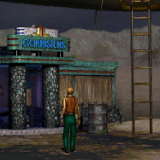 The AM supercomputer, created by the Americans or the Russians or the Chinese, it doesn't really matter by whom, becomes sentient at some point in time, it doesn't really matter when. Since humans are bad and wage wars, mkay? the newly born sentient being decides that it, or he, or whatever, is better off hating humans and wipes out all of them, with the notable exception of five persons. The brutalness of it lies in the fact that said persons are made immortal for the sole purpose of fueling AM's hate towards the human race through torture and all kinds of sick games. And that pretty much sums up the cold, barren universe of IHNMAIMS.
The AM supercomputer, created by the Americans or the Russians or the Chinese, it doesn't really matter by whom, becomes sentient at some point in time, it doesn't really matter when. Since humans are bad and wage wars, mkay? the newly born sentient being decides that it, or he, or whatever, is better off hating humans and wipes out all of them, with the notable exception of five persons. The brutalness of it lies in the fact that said persons are made immortal for the sole purpose of fueling AM's hate towards the human race through torture and all kinds of sick games. And that pretty much sums up the cold, barren universe of IHNMAIMS.
While Ellison's story is written from Ted's (one of the captive people) perspective, the game attempts to cover all points of view and thus has no more and no less than five playable characters. More importantly, the original story deliberately keeps the characters' backgrounds mostly ambiguous, focusing on their immediate traits, some of them twisted by AM to its own liking. By contrast, the game's story focuses on who the five people were in the past, thus giving birth to five distinct scenarios which are quite different from what Harlan Ellison describes in his short story.
This doesn't make the game any less brutal, however: Gorrister keeps his heart in his pocket; Ted's slightly paranoid; Benny is made by AM into an ape-like being that's unable to eat; Ellen is constantly thirsty and terrified by the colour yellow. The story doesn't give the player any hope that any of it could end well, although in truth there is more than one way to end the game.
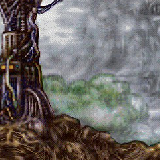 The mechanics are similar to those of SCUMM games like Day of The Tentacle and are based on an engine called SAGA, made by the same Dreamers Guild who developed the actual game. The main innovation here is a so-called "spiritual barometer", which is raised when the player makes "good" choices and lowered when "bad" choices are made, and has a direct impact on the way the game (or a given scenario) ends. This adds to the game's replayability, but it doesn't make the game fully replayable, since it's a lot easier to end the game badly by making "bad" decisions than to get a good outcome from the first try. This makes the whole trial-and-error process more fun and challenging, though.
The mechanics are similar to those of SCUMM games like Day of The Tentacle and are based on an engine called SAGA, made by the same Dreamers Guild who developed the actual game. The main innovation here is a so-called "spiritual barometer", which is raised when the player makes "good" choices and lowered when "bad" choices are made, and has a direct impact on the way the game (or a given scenario) ends. This adds to the game's replayability, but it doesn't make the game fully replayable, since it's a lot easier to end the game badly by making "bad" decisions than to get a good outcome from the first try. This makes the whole trial-and-error process more fun and challenging, though.
The acting isn't particularly bad; it's not particularly good either. The puzzles range from okay to illogical, which I suppose holds true for a large part of the adventure games released in the '90s. All in all, IHNMAIMS is a good way to waste a weekend and nothing more. Nothing extraordinary about it, which doesn't mean it's not worth a try.
As for Ellison's story, I suppose its style must have been considered quite shocking at the time. The "shocking" elements however pale in comparison to most Hollywood "science fiction" crap we see nowadays, so I guess you'll have to stick with appreciating the author's pretty good artistry and nothing more.
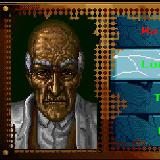
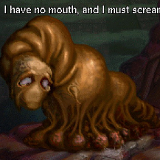

Read: Steam and Linux.↩